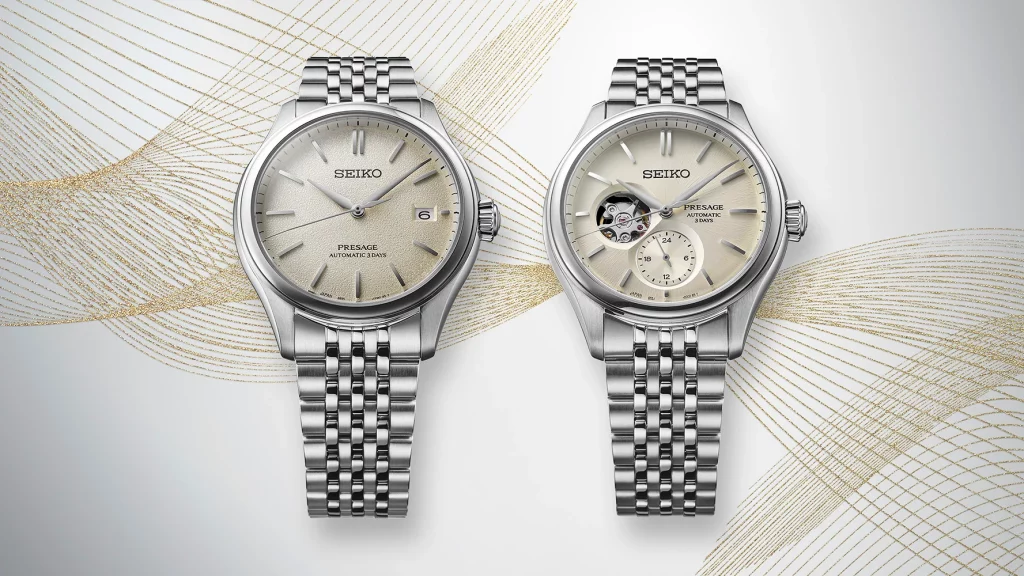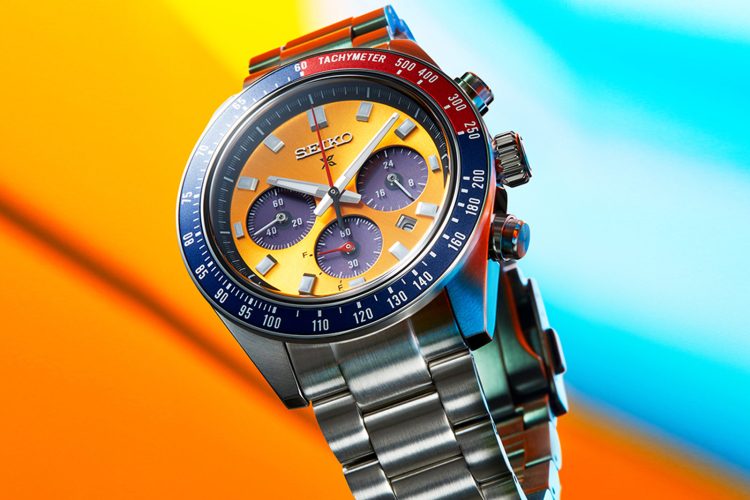Introduction
Seiko, a name synonymous with precision and innovation, has long been a pioneer in the world of horology. For over a century, the Japanese watchmaker has been at the forefront of watchmaking technology, blending traditional craftsmanship with revolutionary advances that have forever changed the watch industry. Seiko’s journey has seen the creation of ground-breaking movements and technologies, from the world’s first quartz wristwatch to the sophisticated Spring Drive mechanism.
In this article, we will explore Seiko’s technological evolution, delving into its most significant innovations, examining how the brand has consistently pushed the boundaries of horological technology. We will explore Seiko’s various types of movements—automatic, quartz, kinetic, and solar, as well as its Spring Drive and Highbeat innovations—and analyze how these technologies contribute to Seiko’s reputation for producing high-quality, durable, and accurate timepieces.
1. Seiko’s Technological Evolution: A Timeline of Innovation
1.1 The Origins of Seiko: The Birth of Innovation
Seiko was founded in 1881 by Kintaro Hattori in Tokyo, Japan. While initially focused on importing and repairing watches, Seiko soon began producing its own timepieces. The company’s commitment to innovation began early, and by the 1920s, Seiko was already developing its own in-house mechanical movements. However, the most significant breakthrough came in 1969 when Seiko revolutionized the watch industry with the introduction of the world’s first quartz wristwatch: the Seiko Quartz Astron. This move forever altered the landscape of watchmaking and solidified Seiko’s position as a leader in horological technology.
1.2 Pioneering Quartz Technology
In 1969, Seiko’s introduction of the Quartz Astron marked the dawn of the quartz revolution. The quartz watch was more accurate than mechanical watches, offering an unprecedented level of precision that mechanical movements could not match. This innovation led to the widespread adoption of quartz movements, which in turn forced many Swiss watchmakers to reconsider their traditional approaches to horology. The Seiko Astron was not just a technological feat—it also set a new standard for affordability and accessibility in the luxury watch market.
1.3 Seiko’s Other Groundbreaking Technologies
Over the decades, Seiko has continued to push the boundaries of what is possible in the world of horology. Some of the brand’s most significant technological achievements include:
- The Spring Drive Movement: Developed in 1999, Seiko’s Spring Drive is a mechanical quartz hybrid that uses a unique gear system to combine the best aspects of mechanical and quartz technology. This groundbreaking movement remains a hallmark of Seiko’s innovation.
- Kinetic Watches: Seiko also introduced the Kinetic movement in the 1980s, which combines mechanical and quartz technologies to create a self-charging mechanism powered by the wearer’s motion. This allowed for battery-free operation and marked a further step in Seiko’s commitment to energy-efficient designs.
- Solar Technology: Seiko has been a pioneer in solar-powered watches, utilizing light energy to power the timepiece without the need for battery replacement. Seiko’s solar technology continues to evolve, with innovations in solar-powered kinetic watches and light-efficient movements.
- The Highbeat Movement: Seiko’s Highbeat technology offers high-frequency movements, providing increased accuracy. The brand’s Grand Seiko Highbeat models have set the bar for precision in mechanical watches, with movements running at 36,000 vibrations per hour.
2. Seiko’s Revolutionary Movements: From Quartz to Spring Drive
Seiko has introduced a range of innovative movements over the years, each pushing the boundaries of watchmaking technology. Below, we explore the key movements Seiko has developed, how they work, and their contributions to the watch industry.
2.1 Quartz Technology: Precision at Its Best
The quartz movement was a game-changer in the watch industry, offering unprecedented levels of accuracy and reliability. Seiko’s Quartz Astron, introduced in 1969, was the first wristwatch to feature a quartz-powered movement. Quartz movements use an oscillating quartz crystal to regulate the passage of time, offering a level of precision that mechanical movements could not match. Seiko’s early adoption of this technology helped set the brand apart and cemented its place in watchmaking history.
Since then, Seiko has continued to perfect its quartz movements, offering everything from solar-powered quartz watches to atomic-powered timepieces that sync with the world’s most accurate time sources.
2.2 Automatic Movements: Traditional Yet Advanced
Seiko’s mechanical movements are known for their durability and accuracy. The brand’s in-house automatic movements, such as the Caliber 4R36, are widely regarded for their reliability, smooth winding action, and long-lasting performance. Seiko has developed a wide range of automatic movements that power some of the brand’s most popular watches, including the Seiko 5 and the Prospex series.
Seiko’s automatic watches are known for their robustness and reliability, offering affordable yet high-quality mechanical movements for collectors and everyday wearers. The Seiko 5 series, in particular, is lauded for providing excellent value with a fully automatic movement at an entry-level price.
2.3 Kinetic Technology: Charging with Motion
Seiko’s Kinetic movement, introduced in the 1980s, was a breakthrough in self-charging watch technology. Kinetic watches harness the power of the wearer’s wrist motion to generate energy that powers the quartz movement. A rotating rotor within the watch’s movement converts kinetic energy into electrical energy, which is stored in a capacitor. This energy is then used to power the quartz mechanism.
The Kinetic movement eliminates the need for battery replacements, making it an eco-friendly solution that combines the accuracy of quartz with the self-winding mechanism of automatic watches. Kinetic technology is found in Seiko’s Kinetic and Kinetic Auto Relay series, which feature battery-free timekeeping.
2.4 The Spring Drive Movement: The Best of Both Worlds
Seiko’s Spring Drive movement, introduced in 1999, is one of the most significant advancements in watchmaking technology. Combining the traditional mechanics of a mechanical movement with the precision of quartz technology, the Spring Drive represents the pinnacle of Seiko’s horological expertise.
The Spring Drive utilizes a unique gear system and an electromagnetic brake to regulate the flow of energy from the mainspring, resulting in unmatched accuracy. Unlike traditional mechanical movements, which rely on an escapement to release energy, the Spring Drive is powered by a continuous glide motion. The result is a smooth, fluid second hand that glides across the dial without the “ticking” motion of conventional mechanical watches.
Spring Drive movements are primarily found in Grand Seiko and Seiko’s high-end models, where the emphasis is on precision, craftsmanship, and elegance. Grand Seiko’s Spring Drive Chronograph and Snowflake are highly regarded for their smooth second-hand and exceptional accuracy.

3. Solar Technology: Harnessing the Power of Light
Seiko has been a pioneer in solar-powered watches, developing cutting-edge solar technology that uses light as a power source. Seiko’s solar-powered watches eliminate the need for batteries, making them more eco-friendly and sustainable.
Seiko’s solar watches work by using a solar cell under the dial to convert light into electrical energy. This energy is then stored in a rechargeable battery that powers the watch. Seiko’s solar technology is known for its efficiency, with some models capable of running for months on a single charge, even in low light conditions.
The introduction of Seiko’s Solar watches has been a game-changer in the industry, offering the convenience of battery-free operation with environmental sustainability. Seiko’s Solar-powered Kinetic models combine the power of both technologies, creating timepieces that offer ultimate reliability and precision.
4. The Role of Innovation in Seiko’s Brand Philosophy
Seiko’s philosophy has always been to create watches that combine cutting-edge technology with exceptional craftsmanship. This philosophy is evident in the brand’s commitment to precision, reliability, and durability. Seiko is also known for creating watches that offer functional beauty—from the robust Prospex diving watches to the elegant Grand Seiko models.
Innovation is deeply embedded in Seiko’s DNA, and the brand continues to push the boundaries of watchmaking with each new release. Whether it’s creating the world’s first quartz watch, developing the hybrid Spring Drive movement, or offering eco-friendly solar-powered watches, Seiko has continuously redefined the standards of what a watch can be.
Conclusion
Seiko’s unwavering commitment to innovation and precision has made it one of the most respected names in horology. The brand’s groundbreaking technologies—ranging from quartz and kinetic movements to the hybrid Spring Drive and solar power—have forever changed the way we think about timekeeping. With a rich history of watchmaking excellence, Seiko’s dedication to both cutting-edge technology and traditional craftsmanship ensures its place at the forefront of the watch industry for years to come.
Seiko has proven time and again that it is not only a pioneer in watchmaking but also a brand that is constantly evolving and innovating, ensuring that its watches remain at the pinnacle of both functionality and style.





































